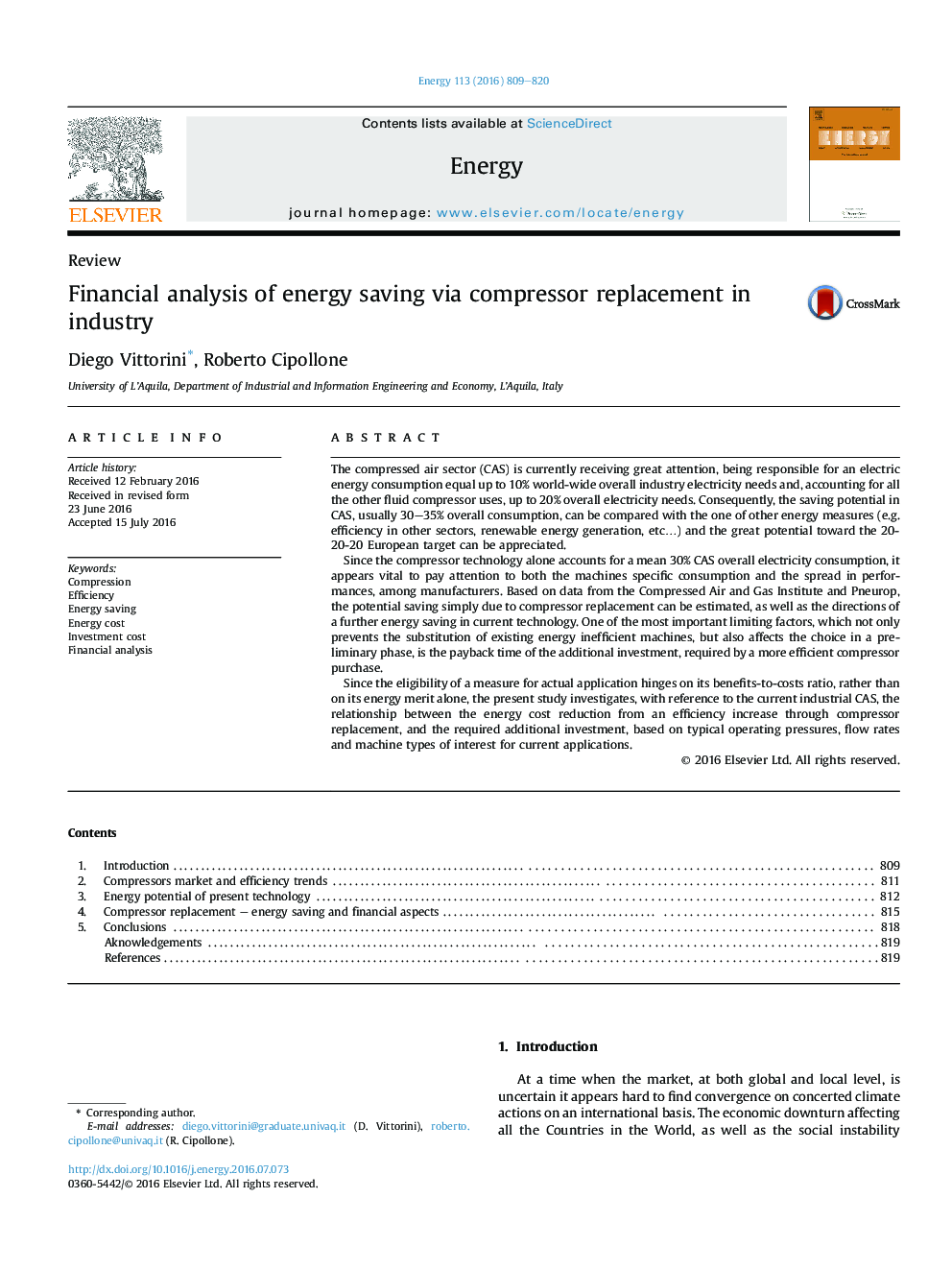| Article ID | Journal | Published Year | Pages | File Type |
|---|---|---|---|---|
| 1730714 | Energy | 2016 | 12 Pages |
•Efficiency baseline for industrial compressed air compressors.•Energy improvement potential in present compressors technology.•Compressor replacement feasibility – Energy and financial dimension.•Compressor replacement effectiveness – Main financial indicators definition.•Financial analysis parametrization – Efficiency, payback time, electricity cost.
The compressed air sector (CAS) is currently receiving great attention, being responsible for an electric energy consumption equal up to 10% world-wide overall industry electricity needs and, accounting for all the other fluid compressor uses, up to 20% overall electricity needs. Consequently, the saving potential in CAS, usually 30–35% overall consumption, can be compared with the one of other energy measures (e.g. efficiency in other sectors, renewable energy generation, etc…) and the great potential toward the 20-20-20 European target can be appreciated.Since the compressor technology alone accounts for a mean 30% CAS overall electricity consumption, it appears vital to pay attention to both the machines specific consumption and the spread in performances, among manufacturers. Based on data from the Compressed Air and Gas Institute and Pneurop, the potential saving simply due to compressor replacement can be estimated, as well as the directions of a further energy saving in current technology. One of the most important limiting factors, which not only prevents the substitution of existing energy inefficient machines, but also affects the choice in a preliminary phase, is the payback time of the additional investment, required by a more efficient compressor purchase.Since the eligibility of a measure for actual application hinges on its benefits-to-costs ratio, rather than on its energy merit alone, the present study investigates, with reference to the current industrial CAS, the relationship between the energy cost reduction from an efficiency increase through compressor replacement, and the required additional investment, based on typical operating pressures, flow rates and machine types of interest for current applications.
